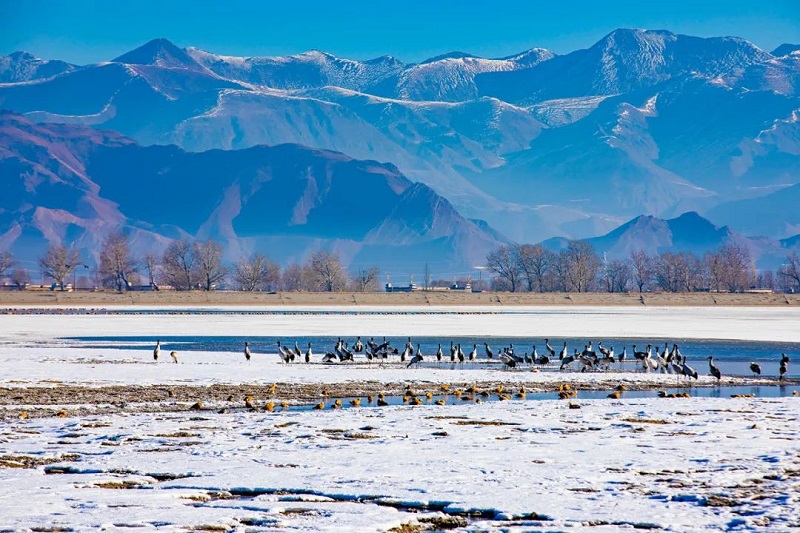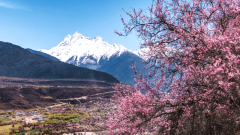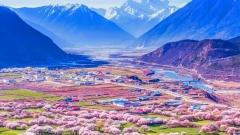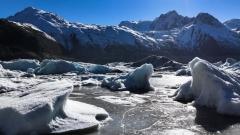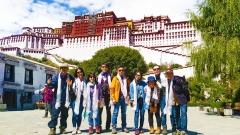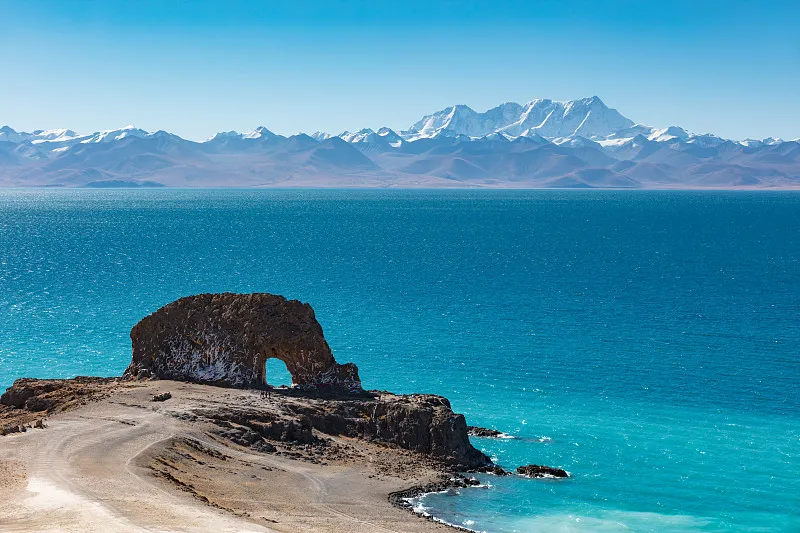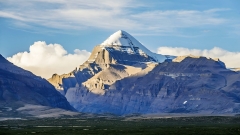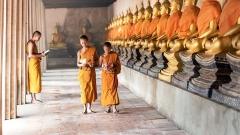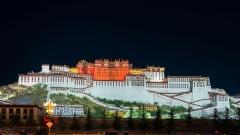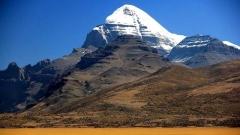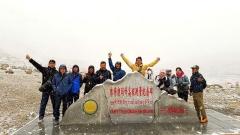When most people picture Tibet in winter, they imagine a frozen plateau swept by biting winds. Yet those who have actually ventured here during the colder months quickly realize how mistaken that image is. Winter in Tibet is not only bearable—it’s enchantingly beautiful, calm, and full of sunlight.
For travelers seeking a more authentic, spiritual, and crowd-free experience of the Roof of the World, winter is one of the best times to explore this mysterious land. This guide will take you through everything you need to know about traveling to Tibet in winter: the weather, the top destinations, what to pack, travel routes, and why it’s easier and more rewarding than you might expect.
What Is Tibet Really Like in Winter?
Many first-time visitors worry that Tibet is too cold to enjoy in winter. The reality is surprisingly mild—especially in Lhasa and Nyingchi, where daytime temperatures often reach 8–12°C under brilliant sunshine. The sunlight at 3,600 meters feels warm, even comforting, making it pleasant to walk around in a light down jacket.
Below is an overview of typical winter temperatures across major destinations:
| City | Month | Temperature (°C) | Travel Notes |
|---|---|---|---|
| Lhasa | December | -5 to 10 | Dry, sunny, little wind |
| Lhasa | January | -7 to 8 | Big day-night difference, clear skies |
| Nyingchi | December | -2 to 12 | Mild, fresh air |
| Shigatse | January | -10 to 6 | Cold mornings, comfortable afternoons |
| Nagqu | January | -20 to -5 | High altitude, excellent snow views |
While it does get cold at night, the dry air and constant sunshine make the climate far more comfortable than damp or windy regions at similar temperatures. With proper layers, winter travel in Tibet is not only possible but delightful.
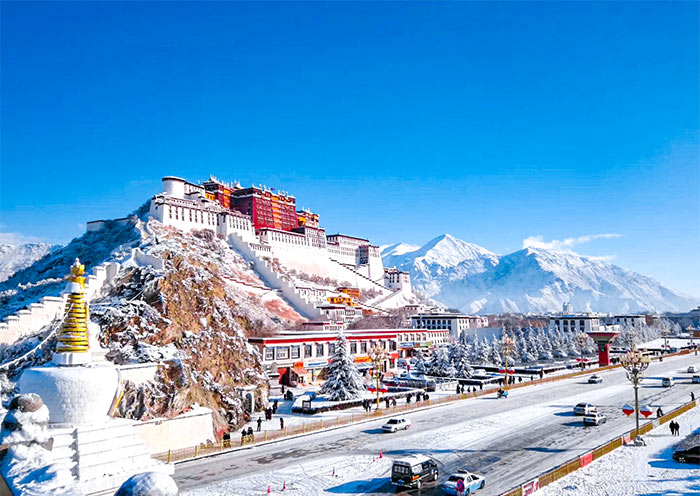
Potala Palace in Winter
Tibet Weather Conditions and Travel Environment
Winter in Tibet is dominated by blue skies, crisp air, and minimal precipitation. Because humidity is so low, the visibility is exceptional—perfect for photographers capturing snow-capped peaks, monasteries, and deep-blue skies.
Contrary to popular belief, oxygen levels in winter are not significantly lower than in summer. With gradual acclimatization, most visitors adapt without issue. In fact, many say that breathing the dry, pure air of winter feels easier than the humid air of monsoon season.
Highlights of winter travel conditions:
- Bright sunshine: Around 8 hours of daylight daily—ideal for sightseeing.
- Dry and clean air: Excellent visibility for mountain photography.
- Smooth transportation: Roads are well maintained and rarely blocked.
- Fewer crowds: Sites are calm and serene, offering deeper immersion.
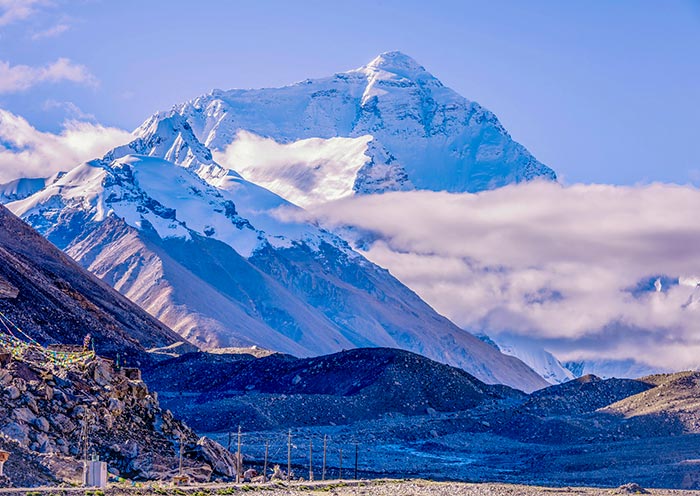
Kailash in Winter
Best Places to Visit in Tibet During Winter
Lhasa – The City of Eternal Sunlight
Lhasa, the capital of Tibet, remains lively even in the coldest months. The Potala Palace, glowing golden under the winter sun, is one of the most breathtaking sights on earth. Pilgrims circle Jokhang Temple and the Barkhor Street kora path every day, their murmured prayers echoing through the crisp air.
Winter brings fewer tourists, allowing visitors to take their time admiring ancient murals, chatting with locals, and tasting butter tea or hot yak stew at traditional teahouses.
Nyingchi – The “Winter Oasis” of Tibet
Known as the “Tibetan Switzerland,” Nyingchi sits at a much lower elevation (about 3,000 meters) and enjoys a mild winter climate. It’s lush even in the cold season, with snow-tipped forests and clear rivers.
The Yarlung Tsangpo Grand Canyon observation deck offers a stunning view of Mount Namcha Barwa, often hidden by clouds in summer but visible in winter’s clear skies.
Shigatse and Mount Everest Region
Winter is arguably the best season to see Mount Everest clearly. The weather is dry and stable, with minimal cloud cover. From Rongbuk Monastery or the Everest Base Camp area, travelers can enjoy magnificent sunrise and sunset views of the world’s highest peak, framed by a sea of snow.
In Shigatse, a visit to Tashilhunpo Monastery gives deeper insight into Tibetan Buddhism’s Gelugpa tradition. Winter’s tranquility enhances the spiritual atmosphere of this historic site.
Namtso Lake – The Frozen Sacred Lake
Namtso transforms into an ice-crystal wonderland in winter. The frozen surface mirrors the sky like polished glass, creating surreal photo opportunities. Despite the cold, the lake area exudes a serene, almost divine calm, making it worth the journey.
Winter Bird-Watching
From November to March, black-necked cranes, bar-headed geese, and other migratory birds descend upon the Yarlung Tsangpo and Lhasa River wetlands. Watching these rare species glide above snow-covered valleys is a moving reminder of life’s resilience in harsh environments.
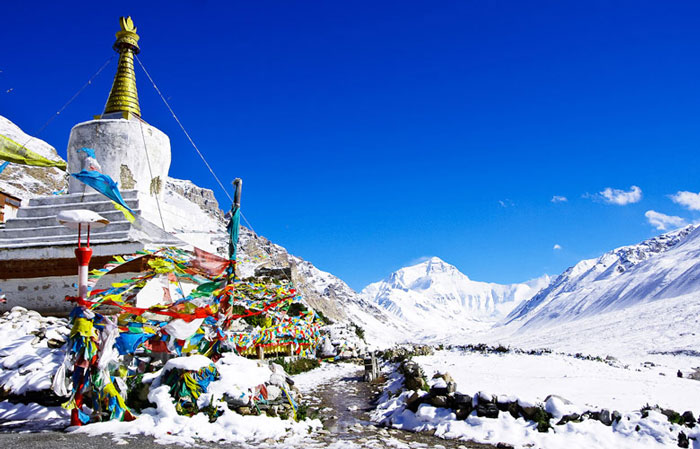
Mount Everest in Winter
Tibetan Festivals in Winter
Losar – Tibetan New Year
Usually falling in February or March, Losar is the grandest celebration in Tibet. Families clean and decorate their homes, prepare special dishes, and gather for religious rituals and dances. Visitors are often welcomed with butter tea and festive greetings—an unforgettable cultural immersion.
Ganden Monastery Butter Lamp Festival
Held on the 25th day of the 10th Tibetan lunar month (around December), this festival commemorates the passing of Tsongkhapa, founder of the Gelug school. Thousands of butter lamps illuminate Ganden Monastery, turning the hillside into a galaxy of golden lights—an awe-inspiring sight.
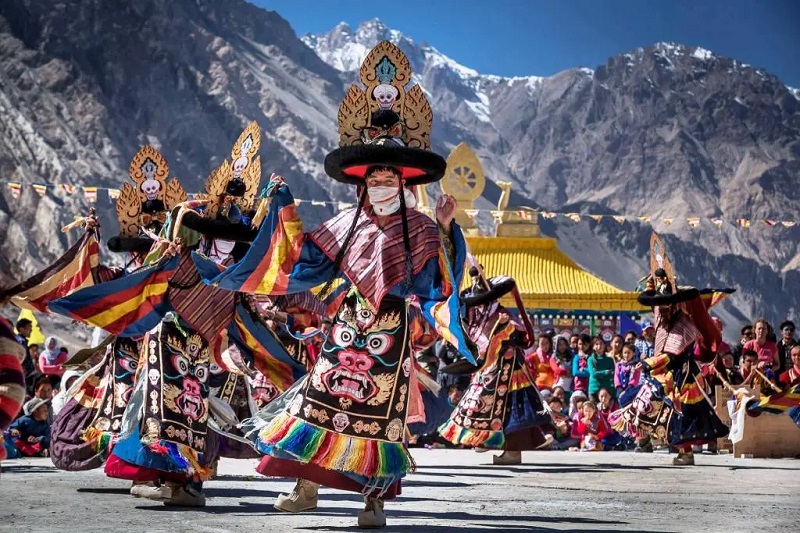
Losar (Tibetan New Year)
Transportation and Accommodation in Tibet Winter
Flights and Trains
Winter is Tibet’s low season, which means cheaper airfares and fewer crowds. Flights between Chengdu, Chongqing, Xining, Kunming, and Lhasa operate normally and are rarely delayed.
For those who prefer a scenic approach, the Qinghai-Tibet Railway runs year-round, offering gradual acclimatization and views of vast snowfields and frozen lakes along the route.
Accommodation
Most hotels in Lhasa, Nyingchi, and Shigatse remain open during winter and offer significant discounts. Rooms are equipped with heating, hot water, and electric blankets. Boutique Tibetan-style lodges provide cozy comfort and authentic atmosphere without the summer crowds.
Why Winter Is the Perfect Time to Visit Tibet
- Less crowded, more authentic – You can experience monasteries and sacred sites without the summer rush.
- Lower costs – Flights, hotels, and tours are often 30–50% cheaper than in peak season.
- Easier permits – Travel permits are processed faster due to fewer applications.
- Ideal photography – Clear air and snow-dusted mountains make every frame postcard-worthy.
For travelers seeking tranquility and depth, winter reveals a side of Tibet that summer simply cannot.
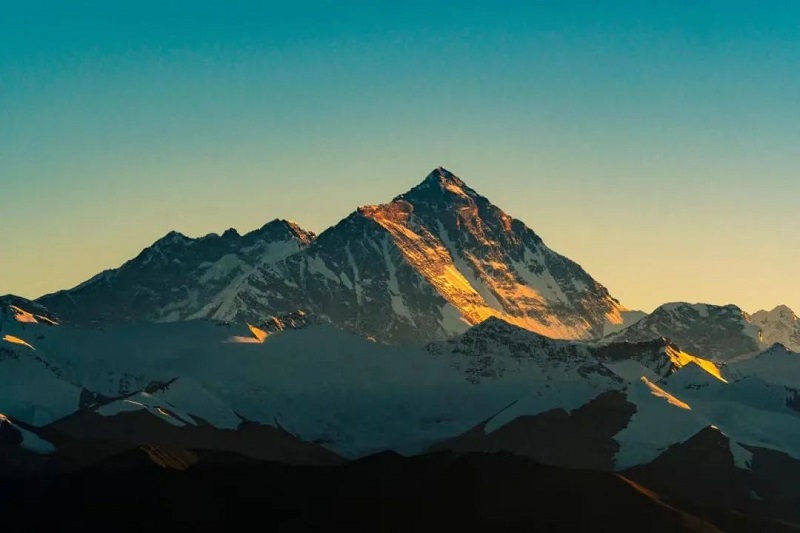
Mount Kailash in Sunlight
Recommended Tibet Winter Itinerary
11-Day Classic Panorama Tibet Tour: Lhasa, Everest, Nyingchi & More
- Lhasa Arrival
- Downtown Lhasa: Potala Palace — Jokhang Temple — Barkhor Street
- Lhasa — Basomtso Lake — Nyingchi
- Nyingchi — Mount Namcha Barwa — Lulang Forest — Nyingchi
- Nyingchi — Kadinggou Waterfall — Lhasa
- Lhasa — Yamdrok Lake — Karola Glacier — Shigatse
- Shigatse — Tingri — E.B.C.
- E.B.C. — Tingri — Shigatse
- Shigatse — Tashilhunpo Monastery — Lhasa
- Lhasa — Namtso Lake — Northern Tibet Grassland — Lhasa
- Lhasa Departure
This route balances altitude adjustment, culture, and natural beauty, perfect for first-time winter travelers.
Packing List and Health Tips in Tibet Winter
What to Wear
- Upper body: Thermal underwear, fleece or down jacket, windproof outer shell
- Lower body: Warm pants or lined jeans
- Footwear: Insulated, waterproof boots with good grip
- Accessories: Sunglasses, sunscreen, lip balm, hat, gloves, and scarf
Health and Safety
- Take it slow on arrival; allow your body to adapt to altitude.
- Stay hydrated and avoid overexertion or alcohol in the first days.
- If mild symptoms of altitude discomfort occur, rest and drink warm fluids.
Photography Tips
Cold air drains batteries faster—bring spares and keep them warm.
Winter sunlight creates ideal lighting for landscapes, especially early morning and late afternoon.
Travel to Tibet in Winter with China Dragon Travel
Winter in Tibet is peaceful, spiritual, and remarkably beautiful – but traveling the high plateau still requires professional planning. With years of experience in organizing custom Tibet tours, China Dragon Travel ensures every visitor enjoys a smooth and safe journey.
Our team arranges travel permits, guides, transportation, and accommodations, allowing you to focus on the experience rather than logistics. Whether you dream of seeing the frozen lakes of Namtso, the glowing Potala Palace at sunset, or the vast silence of Mount Everest in winter, we can design a personalized route that fits your time and interests.
For inquiries or tailor-made Tibet winter tours, contact China Dragon Travel.



